
While we all know about the captivating and devilish little GTI bombs that have had these letters engraved in the Pantheon of the automobile, we know less that the first GTI in history is, according to legend, a divine creation signed at the tip of his trident.

The Maserati 3500 GTI

In 1957, Maserati officially withdrew from motorsport, and all attention was now focused on the production of Gran Turismo cars.
The Trident brand presented at the Geneva Motor Show in March 1957, the one that all the tifosi, the 3500 GT. A luxurious GT but its image lacked the sportiness to make a name for itself.
In 1960, and after 500 units sold, Maserati wanted to change the image of its too wise GT and make it demonic and for that it dotted the i's, its GT is a beautiful and indeed a sports car! and it transfected the injection, an invention that dates back to 1893 when Rudolph Diesel patented fuel injection in a thermal engine.
The 3500 GT became the 3500 GTI, the magic had worked.
Presented at the 1960 International Motor Show, the GTI became the first Italian production car with fuel injection the following year and, more importantly, the first commercially available GTI in history; the injection system had already been fitted to racing cars.
It had Lucas mechanical injection and developed 235 hp (173 kW; 232 PS). The 5-speed gearbox, which had been available as an option since 1960, was made standard. The body had a lowered roofline and became slightly longer. Minor changes to the exterior also appeared (new grille, taillights, 185VR16 Pirelli Cinturato radial tires, ventilation windows). From 1961, the 3500 convertibles intended for export markets were named 3500 GT Spyder and GTi Spyder.
For the record, if injection had been mounted on aircraft engines by Mercedes-Benz and Bosch since the 1930s, it was not until the end of the Second World War that car manufacturers became interested in injection.
In 1949, it was the Indianapolis cars, then, around 1953, an English competition car and, in 1954, Mercedes again, which used indirect or direct injection in competition.
Nowadays, several acronyms have included ''injection'': TDI, GDI, TDCI, Turbo ie... but it is the GTI ''Grand Touring Injection'' which prevails over all the rest due to the characteristics of this category whose production must be restricted and must combine sportiness with luxury.
The best known and most popular GTIs remain those which offer relatively affordable pleasure and which have seen the race to competition from two brands: Volkswagen and Peugeot.
It was VW who first presented its Golf GTI at the Frankfurt Motor Show in September 1975, Peugeot would wait until January 1984 for its 205 GTI to be presented.
But if these are two GTIs competing in the same category, they had common competitors from other technologies, notably the Turbo.

In the 80s, a wind of extravagance and freedom blew, a godsend for European and Japanese manufacturers who wanted to export. The North American market, although fond of sports cars and other Muscle Cars, would not be affected by this phenomenon, even if brands like Ford would launch into this production for their European ranges.
In Germany, Opel presented in 1984 a remarkable Kadett GSI equipped with a 1.8-liter four-cylinder of 115 hp, then 2 liters and 130 hp two years later. At Ford, they tried, but without much success, to counter the Golf from 1980 with the Escort XR3 1600 (96 hp), then XR3i (105 hp), as well as with a sports version of the Fiesta in 1981, the XR2 which will see this same Kent 1.6 Litre engine deliver 84 hp, then 96 hp in 1983 and finally 110 hp on the XR2i of 1989. In the European ranges of Japanese brands, several models will establish themselves, such as the Mitsubishi Colt GTI Turbo of 125 hp in 1986, as well as the Toyota Corolla GT 16S of 121 hp or the Honda CRX of 125 hp in 1987. At the Italian Fiat, the Uno is the best-selling car in Europe in 1983 and the arrival of a Turbo ie version of 105 hp in 1985 was supposed to place this model in the GTI race. If the engine from the Ritmo was quite up to the task, the chassis, on the other hand, would prove less efficient.
Among French manufacturers, the response was quickly organized, particularly within PSA itself, which saw the 205 GTI as a locomotive for other models in the group. Thus, in 1985, Citroën tried to compete with its cousin with the Visa, which was in turn launched in a GTI version, equipped with the same engine as the 205, the Type XU5 J of 1,580 cm3 offering 105 hp. Externally, the Visa GTI was distinguished by its double round headlights, its wing extensions, its specific side skirts and spoiler as well as its GTI logo clearly visible on the corner of the hood. In 1987, it was the turn of the Citroën AX Sport to make headlines with its 1,294 cm3 (95 hp) engine prepared by Danielson. That same year, Peugeot released the 309 GTI equipped with the 1.9 XU9 JA engine offering 130 hp, which was followed in 1989 by the 16-valve 309 GTI version with 160 hp. The most notable French competition, however, remained the Renault Supercinq GT Turbo launched in 1985 to replace the R5 Alpine Turbo of 1981. The Super 5 GT Turbo had the engine of the R11 Turbo, with a displacement of 1,397 cm3 developing 115 hp, then 120 hp for Phase 2 in 1987.
The VW Golf GTI Saga
At Volkswagen the GTI badge is affixed exclusively to compact sports cars, the sedans have the GLI badge '' Grand Luxury Injection '', it must be understood that GTI is a trim level that is not linked to the type of engine, even if Volkswagen basically uses this term for its direct fuel injection system. GTI technology was first deployed on the 1976 Volkswagen Golf GTI. The GTI was intended to power long journeys without sacrificing performance by using a new direct fuel injection system.
Thus we had in GTI the UP, Lupo, Gol, Polo...
The Golf GTI

Golf GTI Mk1

In development since 1974. In 1974, half a dozen Volkswagen employees, including Anton Konrad, then Volkswagen’s chief press officer, concocted a secret plan to develop a sports version of the Golf. There was no official mandate to develop the Sport Golf, but Hermann Hablitzel, board member for technology, ensured that the project continued. The first prototypes were built, including a vehicle with a carburetor engine generating 100 hp. In early March 1975, Hablitzel officially presented the Sport Golf project to Toni Schmücker, chairman of the board of management, who gave it the green light. As a result, the clandestine Sport Golf officially became development order EA195. Now there was a timetable – and an ambitious one at that! The vehicle was set to celebrate its world premiere at the International Motor Show (IAA) in Frankfurt in September, and so the project gathered pace. The EA195 reached a crucial milestone when it was finally paired with the right powertrain, a fuel-injected engine generating 110 hp. However, the Super Golf didn’t even have a name yet. Suggestions that were discussed included the TS and GTS. But it was the GTI that won the race. At the same time, chief designer Herbert Schäfer, an avid golfer, reinvented the gear knob by simply attaching a golf ball to the GTI’s shift rod.

World premiere in 1975, launch in 1976. Then came the IAA. Volkswagen introduced the Golf GTI and received an enthusiastic media response – everyone wanted one! And they got what they asked for. In June 1976, the Golf GTI Mk1, priced at 13,850 German marks, was launched in Germany and went on to become a worldwide success. The original plan was to produce 5,000 units of this special product range in order to at least recoup the development cost and investment in production equipment. However, things turned out a little differently, as neither Konrad, Hablitzel nor Schmücker had anticipated the level of popularity of this Golf GTI with a top speed of 182 km/h and black wheel arch extensions, a black frame around the rear window, a red edge around the radiator grille, tartan sports seats, the golf ball gear knob and a sports steering wheel with a special design feature. The 5,000 units of the Golf GTI Mk1 ultimately ended up as 461,690 units – and the ultimate crowning glory of the product range was the Pirelli-GTI, a special edition generating 112 hp. This is the first chapter of what remains the most successful compact sports car in the world.
But 110 hp is not enough for some fans. Fortunately, the German tuner Oettinger offers a 16-valve cylinder head that increases the power to 136 hp. This Golf GTI 16S will be officially marketed by Volkswagen, but only in France, France being at the time the primary market for the Golf GTI.

1984 – Golf GTI Mk2

Stroke of genius with up to 160 hp. A real stroke of strategic genius followed with the Golf GTI Mk2 at the beginning of 1984. Still developing 112 hp, it perpetuated the concept and design DNA of the first generation. The GTI badges, in particular the red stripe on the radiator grille and the tartan sports seats, became classic design elements and the newcomer ultimately became an icon. In 1984, the vehicle’s power output briefly dropped to 107 hp following the introduction of the catalytic converter. Two years later, Volkswagen compensated for the loss of power with a new 16V engine developing 129 hp with catalytic converter, which came close to the agility of the original GTI (139 hp without catalytic converter). In 1990, the G-Lader compressor in the Golf GTI G60 increased its output to 160 hp.
1991 – Golf GTI Mk3

Up to 150 hp. Volkswagen transferred the GTI badges to the third generation in 1991. The double headlights of the second generation GTI were now hidden behind a split lens and the vehicle's power output started at 115 hp. A year later, the engine output was increased to 150 hp thanks to a new four-valve engine. In 1996, a turbocharged diesel version (TDI) generating 110 hp enriched the GTI concept. Years later, the petrol and diesel engines were divided once and for all into GTI and GTD. 1996 also saw the launch of the anniversary model "20 years of GTI".
1998 – Golf GTI Mk4

Icon generating 180 PS. The fourth generation of the GTI, introduced in 1998, was modest in terms of style and was the first and only GTI to do away with elements such as the red stripe in the grille. Nevertheless, the vehicle still became a design icon, celebrated today as the starting point of a new, cleaner era of automotive design. In terms of technology, the 150 PS Golf GTI Mk4 was a car that kept competitors at bay with its agility and quality. The petrol engines – both four and five cylinders – generated up to 170 PS, while the diesel engines delivered a maximum of 150 PS. In 2001, Volkswagen celebrated the icon’s first quarter century with the turbocharged special edition “25 Years of GTI” generating 180 PS.
2004 – Golf GTI Mk5

Back and up to 230 hp. In September 2003, Volkswagen launched a magnificent comeback of the classic at the IAA with a prototype of the fifth generation of the GTI. More than ever, the acronym GTI became synonymous with compact driving dynamics with this generation. In September 2004, Volkswagen presented the production version at the Paris Motor Show, while the launch of the Golf GTI Mk5 followed in November. Its features were a significantly sharper look, a 200 hp turbocharged engine and supreme handling characteristics. Volkswagen propelled the GTI concept into the future with this version of the sports car. The new Denver design wheels and the black V-shaped radiator grille were particularly striking features. The new turbocharged engine also provided plenty of punch: it propelled the GTI with a manual gearbox to 100 km/h in just 7.2 seconds. Equipping the vehicle with the new dual-clutch gearbox (DSG) reduced the time required to just 6.9 seconds. The vehicle's top speed was 235 km/h. The slogan of the first brochure was: "Top sport has never been so much fun!" On the occasion of the 30th anniversary of the iconic sports car in 2006, its creators introduced GTI fans to the "30 Years of GTI" edition, which generated 230 hp. Equipped with the same engine, the reincarnation of the "Pirelli GTI" was launched in 2007.
2009 – Golf GTI Mk6

Low power-to-weight ratio and up to 235 hp. The sixth generation of the Golf GTI followed in 2009. None other than racing legend Hans-Joachim Stuck was responsible for perfecting the vehicle's settings. This new generation of the Golf GTI redefined the concept of grip thanks to an electronic differential lock (XDS). With a top speed of 240 km/h, this GTI was equipped with a turbocharged engine generating 210 hp and was great fun to drive. This generation featured a sound generator and a new exhaust system concept (with one tailpipe on the left and one on the right) for audible dynamism. This GTI has always continued the tradition of the original version into the future. In 2011, the vehicle was made available as a convertible for the first time. This generation culminated in the 235 hp “Golf GTI Edition 35” on the occasion of the product range’s 35th anniversary in 2011. Volkswagen presented the new GTI flagship at the Nürburgring and, with an output of 235 hp, it was the first to approach 250 km/h – 247 km/h to be precise. Thanks to a power-to-weight ratio of 6 kg/hp, the GTI became more agile than ever, reaching 100 km/h in just 6.6 seconds.
2013 – Golf GTI Mk7

In top form with up to 310 hp. The seventh generation of the GTI was launched in two output versions in spring 2013. Volkswagen unveiled this new Golf GTI to international media representatives in Saint-Tropez. It was the first time that the vehicle was directly launched in two output versions – the base version02 delivered 162 kW/220 hp while the Golf GTI Performance03 could unleash 169 kW/230 hp. The latter was the first Golf GTI to feature a differential lock for the driven front axle and to be built on the modular transverse matrix (MQB). This new technical platform made it possible to reduce the weight of the GTI by up to 42 kg compared to its predecessor, making it even more dynamic. The 230 hp version with manual gearbox was the first Golf GTI to reach 250 km/h. This is how the Golf GTI Clubsport04 was born, presented in action on the Portimão circuit in November 2015, which was capable of delivering up to 213 kW/290 hp thanks to a boost function. The vehicle was launched in 2016 and it blurred the boundaries of motorsport. It took only 5.9 seconds to accelerate the vehicle to 100 km/h. A year later, the Golf GTI Clubsport S04 with an output of 228 kW/310 hp, it made a breakthrough into motorsport territory. In spring 2016, Volkswagen works driver Benjamin Leuchter smashed the previous record for front-wheel drive vehicles on the Nürburgring Nordschleife in the Golf GTI Clubsport S with a top speed of 265 km/h in 07:49:21 minutes – what a way to celebrate the 40th anniversary of the Golf GTI!
2019 – Golf GTI Mk8

The secret to the GTI’s success is that its DNA has never changed. It still has a sleek design, front-wheel drive, the most agile running gear, a powerful petrol engine, badges like the red stripe on the grille and chequered seat covers. The pinnacle of this generation is the Golf GTI Clubsport, with engineers improving the engine, brakes, suspension and steering to create a vehicle that is even more exciting to drive. Under the bonnet is a 2.0-litre turbocharged four-cylinder engine that produces 300bhp and 400Nm of torque. For comparison, the standard GTI produces 242bhp and 370Nm. The Clubsport comes exclusively with a seven-speed dual-clutch gearbox to keep up with the times, with purists missing the manual. VW estimates its 0-100km acceleration time of 5.6 seconds and an electronically limited top speed of 250km/h.
Golf 8 R (ultimate)
Although the GTI is a sign of speed, the fastest Golf ever produced is an R, the ultimate version of the Golf that overlooks the GTI but does not have the aura of the latter and will not have a life extension like the Golf even if the last limited version has made the buzz.
The Golf R 333 Limited Edition produced in 333 copies and 333 hp, it can complete the 0 to 100 kilometers / hour in 4.6 seconds and reach a top speed of 270 kilometers / hour. In addition to its increased power, the Golf R 333 is also distinguished by the color of its body, it is painted in Lime Yellow Metallic, 19-inch black wheels and an Akrapovic exhaust line which ensures you do not go unnoticed, a style that could well become a collector's item in the eyes of many. A version reserved exclusively for Europe and which was sold online in 2023 at the price of 76,410 euros in just 8 minutes!
Last stand, EV is back in 2024 with the new Golf 8.5, in their R and R Variant versions, distinguished by a revised front end, modernized optics, and an illuminated Volkswagen logo. Among the notable developments, we also note the addition of new 19-inch forged wheels, weighing only 8 kg each, thus improving driving dynamics thanks to a reduction in unsprung mass.
Inside, the Golf R 8.5 incorporates technological advances similar to those of the eighth generation of the Golf. The 10.2-inch Digital Cockpit Pro dashboard and the 12.9-inch central screen, supplied as standard, form a modern and intuitive display duo. The infotainment system has been restructured, now including an advanced voice assistant, capable of interacting with ChatGPT, showing the advanced integration of technology in the cabin. Under the bonnet, the Golf R and R Variant 8.5 benefit from a power increase thanks to their 1,984 cc TSI 4-cylinder engine, increasing from 310 to 333 hp (245 kW) and delivering 420 Nm of torque. This upgrade, comparable to the “20 Years” special edition, allows the five-door Golf R to reach 100 km/h in just 4.6 seconds, while the R Variant achieves this in 4.8 seconds. By opting for the Performance package, the top speed can be increased to 270 km/h. This engine is coupled exclusively with a 7-speed DSG gearbox and the 4MOTION all-wheel drive with R-Performance Torque Vectoring.
The history of the Golf R began in 2002 with the legendary Golf R32.
The future GTI

Announced one day to be discontinued and one day scheduled, the future Golf GTI will finally be produced, VW being unable to do without its best-selling model in history, but this GTI will no longer have injection since it will be electric and its name will not be under the ID name (like the rest of the range of VW electric products), so the ''i'' in ''gti'' will perhaps be for the word ''ilitricititi'' :) (Algerian humor) which still suggests a long lineage for the GTI.

The Peugeot GTI Saga
Peugeot has built a long saga that began with the 205 with equally successful models such as the 106, the 309 and the last one that closes this line: the 208, but we never forget our first love.
The 205 GTI

In 1982 Peugeot created the sacred number 205 in 1982 and in 1983 the lion showed its claws with the first sketch of a sacred 205 GTI, and so in 1984, the first competitor of the Golf GTI was finally there.
A commercial success, it will be produced in 332,942 units from 1984 to 1994, the 205 GTI enjoys a formidable expansion of small sports sedans. To satisfy a very targeted clientele, young and male in its majority, it will be available successively with engines of 1.6L of 105hp, 115hp then 1.9L of 130hp.
Characteristics of the 205GTI, like a true sports car, it is only available in a 3-door version with rims inspired by the Turbo 16s version, plastic wing extensions, strips and bumpers with red edging, "1.6" or "1.9" logos with "GTI" below on the kidney-shaped rear quarter pillars, additional headlights in the front bumper skirt, ventilated disc brakes at the front, wide drums at the rear, leatherette and fabric bucket seats, optional electric windows and the characteristic red carpet.
Several special versions were available: the "Grand Prix", the "Sport", the "Top Line", the "Magic", the "Australia", the "Gentry" (which is not actually a GTI) and one of the most sought-after: the "Griffe" with its "Fluorite Green" color and its 1.9 anthracite gray wheels.

The 205 GTI has succeeded in reviving the image of the 205 and rejuvenating that of the brand.

.png)

















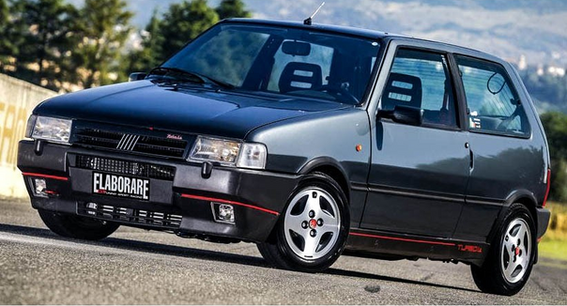











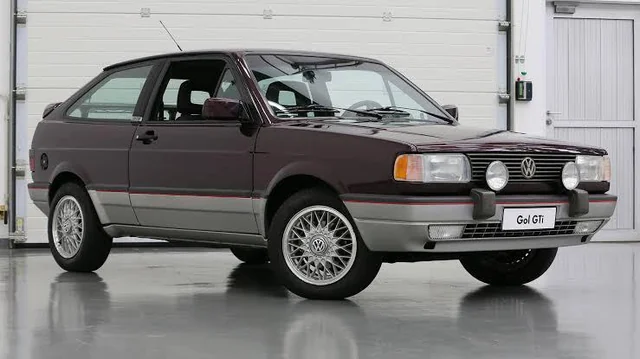














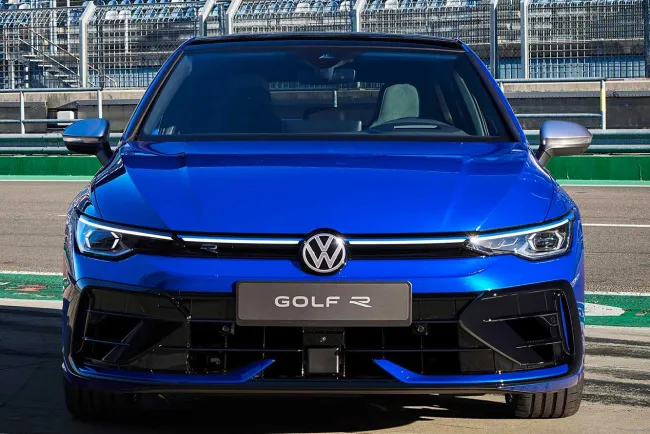
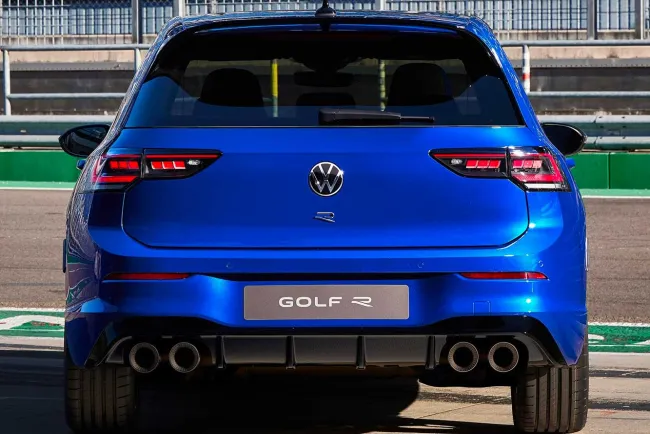
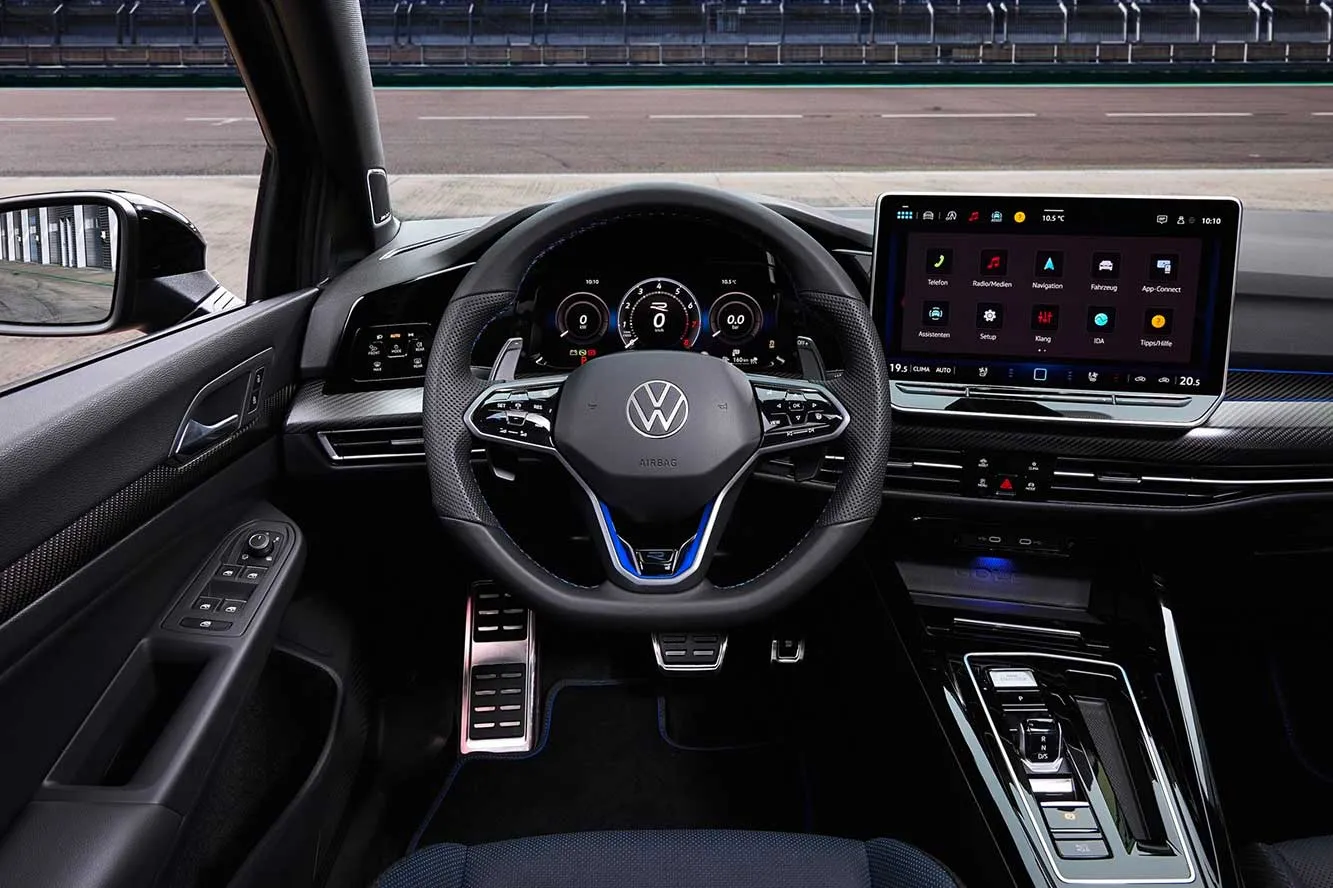
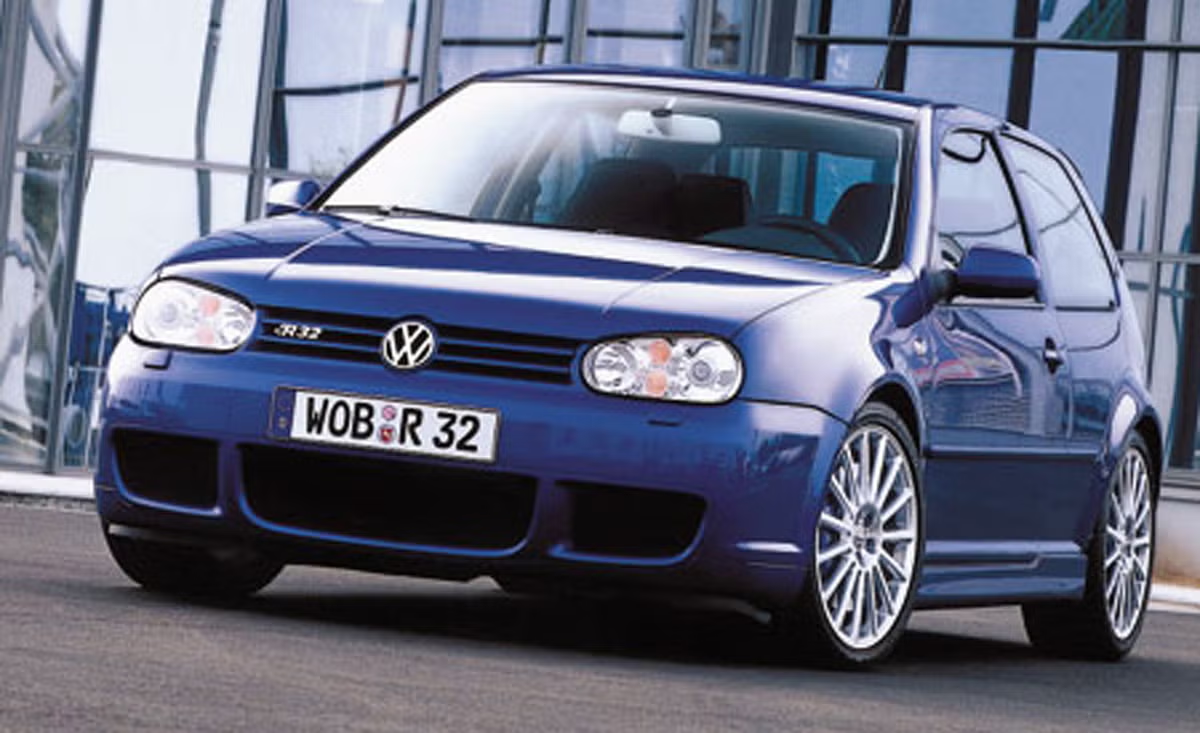



















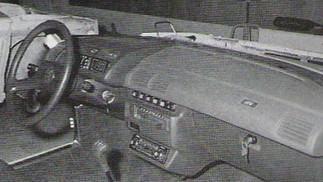






















Comments